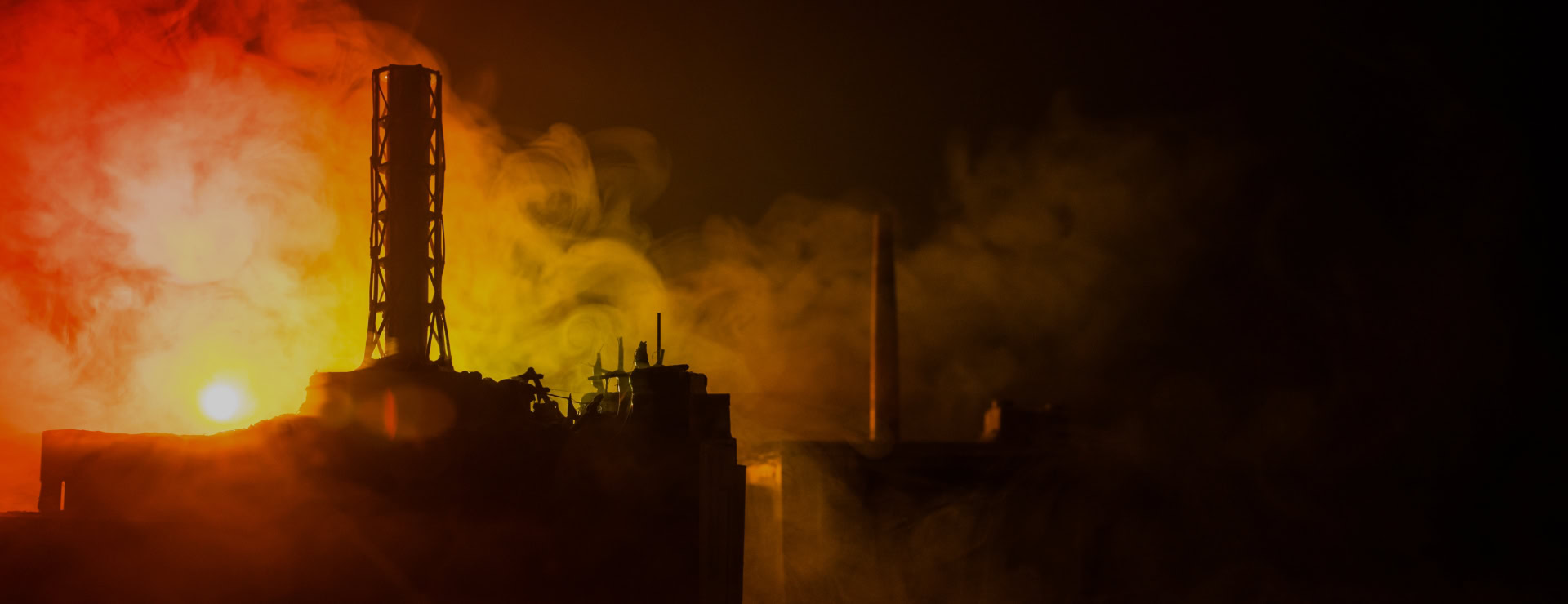
Our plant explosion & injury law firm is prepared to fight for you. Call us at (281) 801-5617 or contact us online to get started with a free consultation.
Different Types of Cases Our Explosion Lawyers Handle
Oil Refinery Explosion
An oil refinery is a facility that transforms crude oil into a spectrum of petroleum products, including gasoline, diesel, and various heating oils. Through processes such as distillation, cracking, and reforming, crude oil undergoes chemical and physical changes and converts into products that people and companies use in their daily lives. These refineries are important because they enhance raw materials into important products and provide them to retailers, which contributes to energy supply and economic activity.
An oil refinery explosion can occur despite safety protocols and technological advancements. Common triggers include safety violations, human error, inadequate maintenance practices, defective equipment/components, as well as improper storage or handling of chemicals. These explosions are devastating not only to the workers and community but can also result in severe environmental damage and economic disruption.
Natural Gas Plant ExplosionA natural gas processing plant is an important facility in the energy industry, purifying raw natural gas to meet the quality standards required for transportation through national pipelines. These plants recover valuable natural gas liquids (NGLs) such as ethane, propane, and butane, which have many different industrial applications, including fuel, raw material for petrochemicals, and enhancing oil recovery in wells. The plants separate impurities, nonmethane hydrocarbons, and fluids from the natural gas stream. This is commonly referred to as “pipeline-quality” dry natural gas.
Natural gas processing plants have a risk of explosion due to the nature of the chemicals they work with, even with safety standards and protocols in place. Common causes are equipment failures, such as valves or compressors malfunctioning, human error, poor maintenance practices, or improper handling of hazardous materials, all of which contribute to the risk of an explosion.
Chemical Plant Explosion
A chemical plant is a facility that focuses on the large-scale processing of chemicals. These facilities are designed to harness chemical or biological transformations, as well as separation techniques, to produce new materials or compounds. These plants contribute significant benefits to modern life.
Chemical plants still run the risk of explosion even with safety standards and advancements. Common risks are equipment failures, such as leaks or malfunctions in vessels or piping systems, and human error, often stemming from inadequate training or lapses in safety procedures, which also pose significant risks within these complex industrial environments. Other factors, such as impure chemicals, corrosion, the presence of combustible dust, contaminated water, or safety violations, can further exacerbate the potential for explosions. Given the potential consequences on both human life and the environment, chemical plants must prioritize safety measures, continual risk assessment, and adhere to strict regulatory standards to mitigate the catastrophic risk of an explosion.
Industrial Explosion
Industrial plants process raw materials into products essential for everyday life, such as food and beverage, chemicals, metals, textiles, electronics, and oil and gas. Each type of industrial plan operates distinct processes and utilizes specialized equipment tailored to its specific manufacturing requirements.
Industrial plants pose a significant risk for explosions due to the nature of the products that are being worked with. Common causes are equipment failures, such as valves or compressors malfunctioning, human error, inadequate maintenance practices, or improper handling of hazardous materials, all of which contribute to the risk of an explosion. Additionally, issues like the use of impure chemicals, corrosion, accumulation of combustible dust, contamination of water sources, or safety violations further heighten the risk of explosions. Given the potential for catastrophic consequences to the environment and human life, industrial plants must prioritize strict safety measures, ongoing training, and adhere to regulatory standards to mitigate the risk of incidents.
If you or someone you know has suffered from a plant explosion, call our plant explosion lawyers today at (281) 801-5617. Your initial consultation is completely free and entirely confidential.





 If you or a loved one were injured or killed in a plant explosion,
If you or a loved one were injured or killed in a plant explosion, 


















